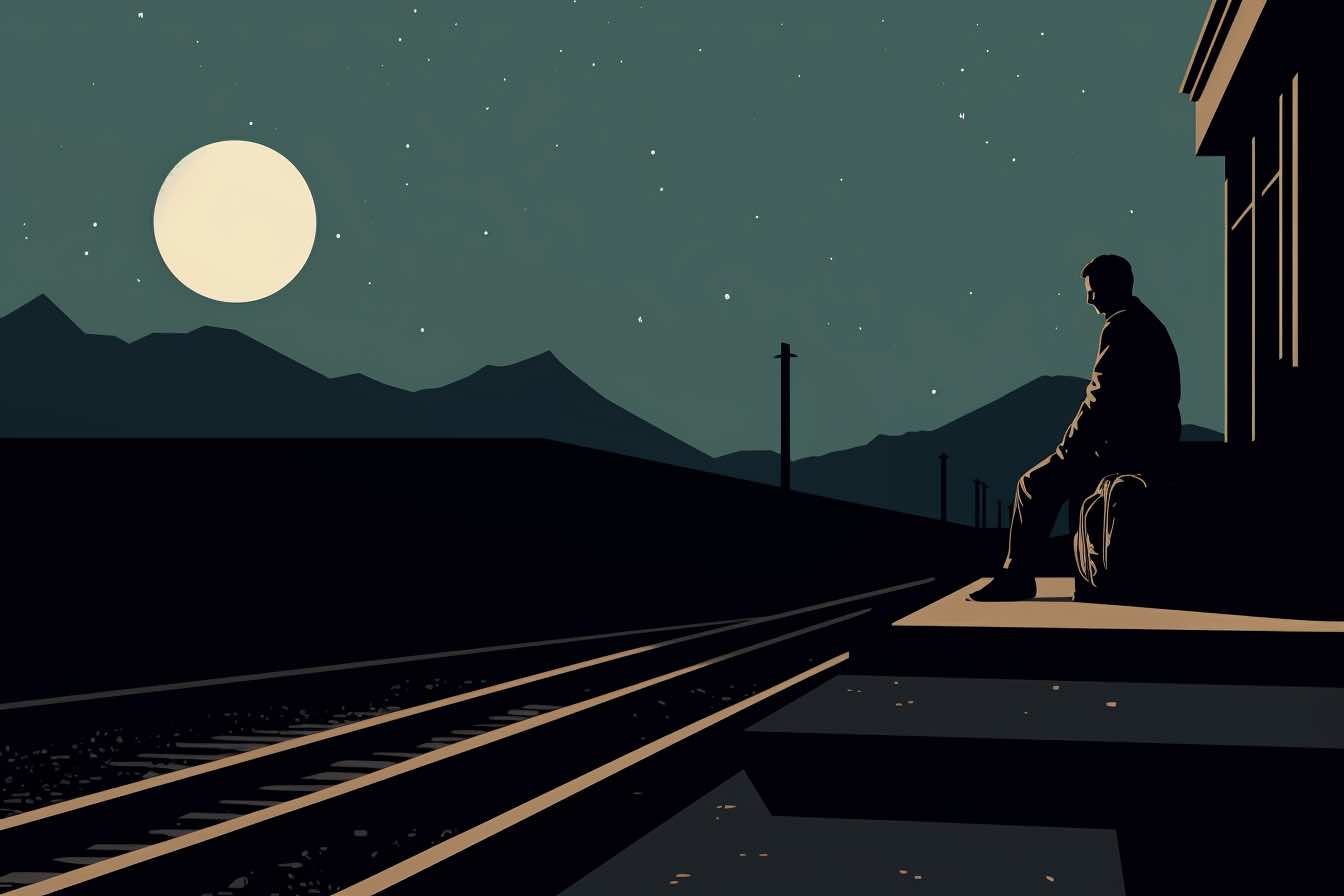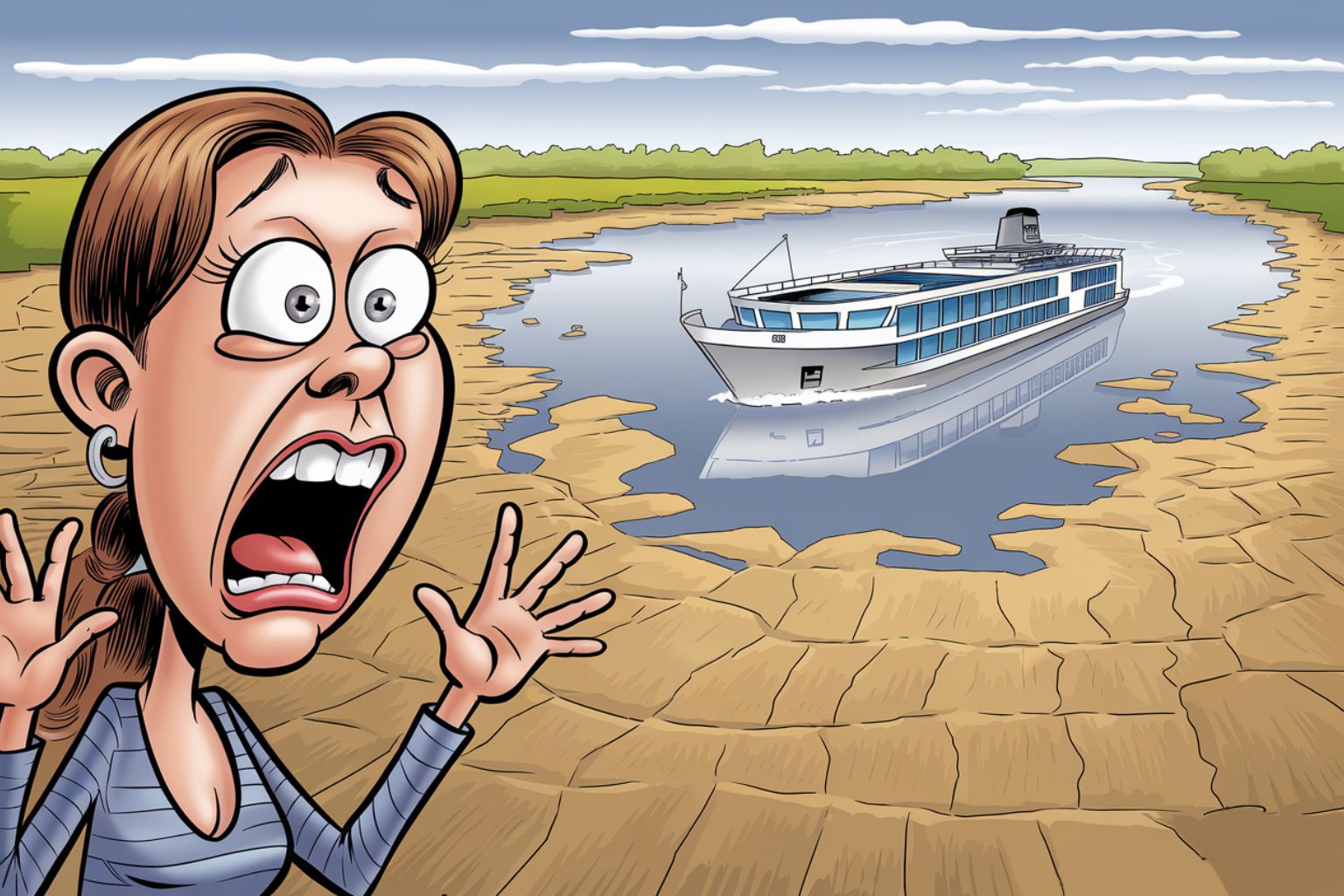Alan Gore wants to know why Amtrak is almost always late for him. Not just a little bit late, but ridiculously, absurdly, preposterously late.
Like the time he tried to catch an Amtrak train from Phoenix to Los Angeles. He and his girlfriend arrived before their scheduled 7 p.m. departure.
And they waited. And waited.
The train finally pulled into the station at 5 a.m. — the next day. They connected with the Amtrak Surfliner and arrived in San Luis Obispo, Calif., their final destination, a full day later than planned.
“One of the conductors told me that being twelve hours late is perfectly normal,” says Gore, a photographer who lives in Sedona, Ariz. “I didn’t even bother asking for compensation.”
Anyone who travels by train in the United States knows that feeling. In the latest quarter, Amtrak trains were delayed 1.42 million minutes, up 9% from the previous quarter and an increase of 10% from 2022. It’s particularly bad on Gore’s route, the Sunset Limited. Over the last year, passengers have been delayed by a total of 11 weeks and only 28% of trains are on time, according to Amtrak.
“That record is even worse than those numbers indicate because each of those long-distance trains is given a 30-minute grace period before it is officially designated as late,” explains Jim Loomis, author of All Aboard: The Complete North American Train Travel Guide.
Here’s why the trains are often late in America
It’s complicated. Amtrak does not have dedicated tracks outside of the Northeast and parts of Michigan and Indiana and uses the same rails as freight trains. But essential consumer protection rules are missing, too. And the sad fact that most Americans don’t care about trains isn’t making it any easier to fix the problem. (Here’s our ultimate guide to surviving a train terminal.)
Joel Sutherland, a professor of supply chain management at the University of San Diego and a former CSX Railroad official, says America’s rail network is set up to favor freight trains.
“Amtrak must share the rail lines with freight trains, and freight trains tend to get priority,” he says. “This is especially true west of the Mississippi where the rail infrastructure is lacking compared to the East Coast.” (Related: After a “traumatic nightmare” on Amtrak, can I get my money back?)
Waiting for freight trains is the largest cause of passenger train delays, according to Amtrak. America’s rail network is set to favor freight trains, even though, by law, passenger trains should get priority. As a practical matter, the law is difficult to enforce. A proposed bill would allow Amtrak to begin directly enforcing the rules, but the law is stalled in Congress.
Amtrak has also called for an investigation, which is now in progress, into how Union Pacific Railroad favors freight over people on the Sunset Limited. Union Pacific did not respond to questions about delays on the route.
But the problem is bigger. American train passengers lack some basic consumer protections that might motivate rail carriers like Amtrak to fix the problem faster. (Related: Where’s my Amtrak refund?)
Does Amtrak compensate you for delays?
Believe it or not, Amtrak doesn’t have to compensate delayed passengers.
There is no federal law that requires even a partial refund if your train is late. (In Europe, you get a 25% refund of the ticket price if the delay is between 1 and 2 hours and a 50% refund if the delay is 2 hours or more under EU regulations). Amtrak’s customer service commitment does not promise compensation for delays, either.
As a practical matter, Amtrak sometimes offers compensation in the form of credits for future travel to passengers who experience a long delay.
“We always encourage customers to let us know about their trips, what went well and what did not,” says Amtrak spokesman Marc Magliari. “For the most part, we work with them individually on whether credit for future travel or a refund is appropriate.”
Amtrak has been experimenting with automatically awarding Amtrak Guest Rewards points to customers on Acela trains based on the length of their delay. Amtrak would not give any specifics, since it’s still a pilot program. But Magliari says passengers are welcome to contact Amtrak and fill out a trip report, which could lead to policy changes or additional compensation.
Still, the fact that U.S. rail carriers don’t have to compensate their passengers for delays may give them less incentive to fix the delays.
What will it take to fix the delayed trains?
Rail experts say nothing less than a massive new investment in passenger rail infrastructure — new trains, high-speed tracks, generous government support — can fix this mess.
But a little more involvement from passengers might help, too.
What does it take to make you care about trains? A lot, apparently.
The last Amtrak story to gain widespread national attention was the “train ride from hell” back in January. That’s when an Amtrak Auto Train from Washington, D.C., to Orlando was delayed by almost 20 hours because of a freight derailment. Some passengers reportedly called 911 and claimed they were being held hostage on the train. The experience prompted an outcry from Congress, which demanded answers from Amtrak.
But maybe we’re looking in the wrong place for the solution. Consider the other big rail story of the year, the opening of Brightline, a private rail service from Miami to Orlando. The high-speed train can make the trip between the two Florida cities in just under three hours. Brightline also plans a high-speed train between Los Angeles and Las Vegas in 2027. It will operate on new tracks without any freight trains.
What would it take to love trains again?
Brightline might be enough to make Americans fall in love with trains again. And here’s what I mean by love: I recently spent two months in Japan, which has one of the best rail networks in the world. Its shiny bullet train, called the Shinkansen, is faster and more efficient than flying and often less expensive. Veteran tour guide Joe Okada, who at 94 is the oldest tour guide in Japan, says in the 1950s Japan dreamed of a transportation system that was better, faster, cheaper, and safer.
“Shinkansen made our dreams come true,” he says.
But there is also a sense of national pride in these superfast trains, which whisk you from Tokyo to Kyoto in about two hours, or five hours less than it takes you to drive.
“Have you been on the Shinkansen yet?” people asked me. And when I said yes, they gave me a knowing smile because the Shinkansen is pretty spectacular.
No one says that about Amtrak, except maybe ironically. Amtrak is trying to reverse the trend with new overnight trains, station upgrades and improved meals. But it’s not enough. We could fix Amtrak by enforcing the law that gives it the right-of-way and strengthening consumer regulations. And by thinking bigger, when it comes to trains.
“It’s past time to have a national conversation about rethinking, funding, and fixing America’s rail infrastructure,” says Bill McGee, a senior fellow for aviation and travel at the American Economic Liberties Project. “The delays will only worsen the longer we wait.”
Elliott’s tips for avoiding a train delay
Here’s how to avoid a long wait when you take Amtrak.
Sign up for delay alerts
You can do that on the Amtrak site. The sooner you know about a delay, the sooner you can make alternate plans, like driving or flying.
For long distances, take Amtrak only on reliable routes
Amtrak’s City of New Orleans, between Chicago and New Orleans, is the most punctual (if you can use that term) long-distance train in the most recent quarter, with a 79% on-time rating. It’s followed by the Capitol Limited between Washington and Chicago (74%) and the Lake Shore Limited between Boston/New York City and Chicago (68%). Avoid chronic laggards, like the Sunset Limited between Los Angeles and New Orleans, which is on time only 19% of the time.
Or avoid the train entirely
While a train might be faster for some routes (notably where Amtrak owns the tracks in the Northeast), you can often get there faster by driving or even taking a bus. For longer distances, flying is almost always more cost-effective and convenient if there’s an airport at or near your destination.
About this story
I wrote this article after Jim Loomis, the author of “All Aboard: The Complete North American Train Travel Guide,” contacted me. He suggested Amtrak’s delays were getting overlooked by the mainstream media, and I agreed with him. I had not written about Amtrak in a while. It’s true that most travel journalists are obsessed with planes (even though most Americans travel by car).
My research led me down a rabbit hole. I discovered that the problem is worse than it appears. Amtrak is so far behind the rest of the world that nothing less than a massive infusion of government aid and bold vision is necessary to save rail travel in the United States. Indeed, this weekend Amtrak introduced its newest train, capable of top speeds of 125 miles per hour. (I’m not making this up.) Meanwhile, Japan is planning a new high-speed train that is about three times as fast and will debut a year after Amtrak’s new trains start in 2026. America is being left in the dust. Literally.
This story was researched, written and fact-checked by Christopher Elliott and edited by Andy Smith and his team. Dustin Elliott is our illustrator with a hat tip to Edward Hopper.




